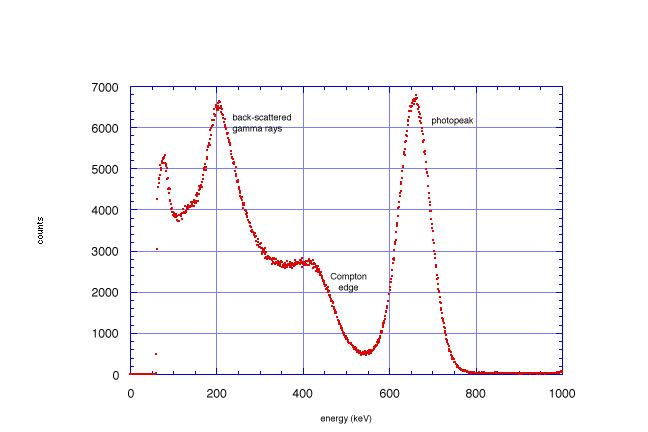
Appendix 11: Photomultiplier Spectra
R. Wilson
March 1996
For a thin NaI crystal we expect that the spectra will be dominated by the first interaction of a gamma ray. Thus for a 660 keV gamma ray we expect a "full energy" peak if the gamma ray knocks off a K or L electron by the photoelectric effect.
If the gamma ray interacts by the Compton effect, it will scatter and we will see the energy of the knock-on (recoil) electron. The Compton formula and the Klein-Nishina formula for the cross section are not normally expressed in terms of the energy of the electron, but they can be.
These two together give a spectrum:

In addition we often see a peak at 200 - 300 keV. This can be seen to be the energy of a gamma ray Compton scattered between 90û and 180û off something. This arises by scattering from shields and other material surrounding the photomultiplier and crystal. It can be eliminated by careful collimation and shielding.
If the crystal is thicker, secondary interactions will enable the full energy to be expressed in a larger number of situations, so that the "photopeak" gets bigger. It is still called the "photopeak" but that is no longer an accurate description.
At higher energies, the first interaction can be pair production by the incident gamma ray. Two peaks appear below the photopeak corresponding to the "escape" of one or both of the gamma rays of 511 keV from the annihilation of the positron. They are called "escape peaks."
Typical spectra are shown in the following references:
"Alpha, Beta, Gamma Spectroscopy" Ed. Siegbahn, N. Holland.
J.B. Birks, "The Scintillation Counter."